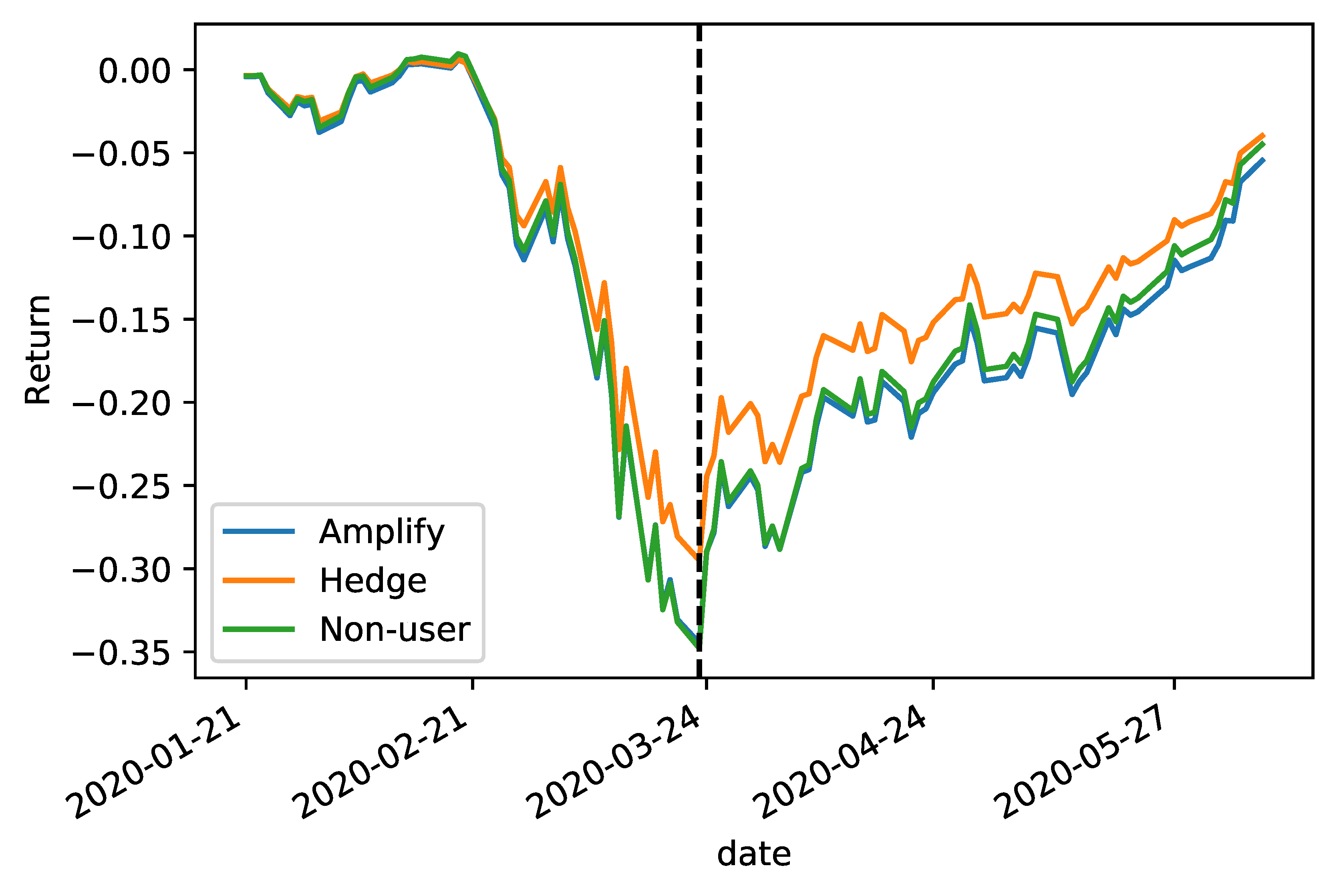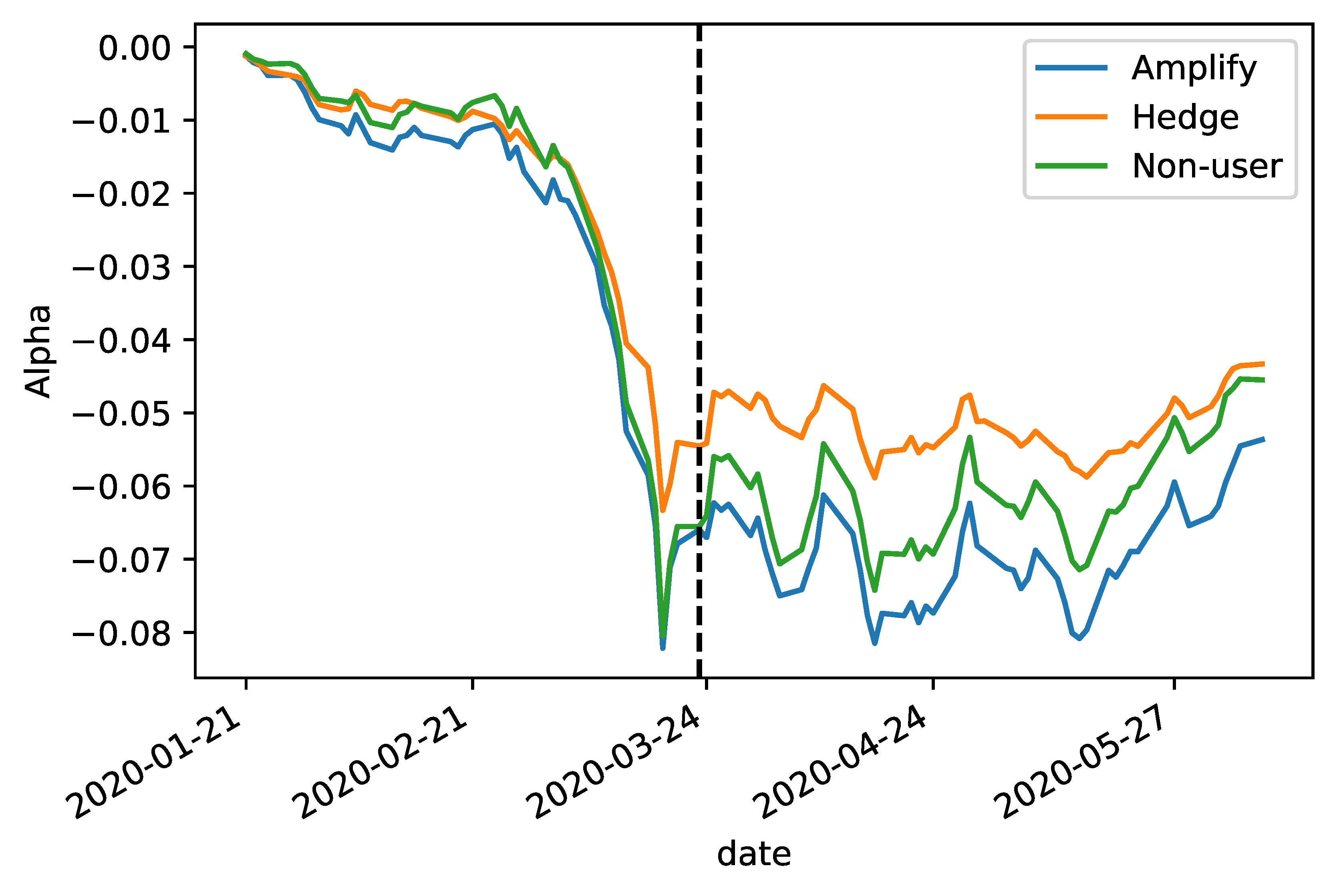"Derivatives have come to play an important role for many funds in portfolio strategy and risk management, but the regulatory approach for derivatives use has been inconsistent and outdated," said Securities and Exchange Commission (SEC) Chairman Jay Clayton in a press release on 28 October 2020. Around 30% of mutual funds hold derivatives. Yet, there is little evidence of a direct relationship between fund performance and derivative use to date. The most direct evidence so far comes from a survey of mutual funds by Koski and Pontiff (1999), which suggests most mutual fund managers use derivatives for hedging, and only a small minority use them for amplification and speculation.
The ability to answer questions such as whether funds use derivatives to hedge or amplify positions has been hindered by the lack of appropriate data, which has not allowed reasonable estimates for funds' derivative positions and derivative portfolio returns to be recovered. The data used by previous studies typically provided only flags identifying derivative use at a semiannual frequency. This is especially limiting when trying to understand dynamic relations between derivative and equity positions.
In a recent paper (Kaniel and Wang 2022), we use a novel dataset extracted from the SEC's Form N-PORT. The new data allow us to infer the performance of fund derivative positions, evaluate the impact of derivatives on fund returns, and empirically test whether derivatives are used for hedging or amplification among US domestic active equity mutual funds. We find that:
- Contrary to prior evidence, most derivative-using funds use derivatives to amplify market exposure rather than to hedge against risks.
- During the COVID-19 crash, derivative users significantly increase their derivative use, driven mainly by amplifying funds entering short derivative positions on the equity index.
- However, they failed to outperform non-users, partly because they suffered a double whammy from their derivative positions. They suffered losses at the onset of the crisis due to the amplifying nature of their derivative positions. Furthermore, their short derivative positions resulted in significant losses when the market rebounded unexpectedly due to the Fed's unanticipated quantitative easing (QE) intervention.
A novel dataset of derivative use by mutual funds
We construct a novel dataset using SEC's Form N-PORT, which recently became available in September 2019. The key innovation of this dataset is that it contains realised and unrealised profit and loss (henceforth, PnL) of derivatives at the monthly frequency. Such information is critical, as it allows researchers, for the first time, to dig into the performance of funds' derivative strategies. Besides information on derivative performance, the data also contain detailed quarterly holdings of all derivative positions, the underlying assets, portfolio weights, and notional amounts of all derivative contracts.
How are derivatives used?
We examine whether fund managers use derivatives to amplify or hedge returns on their equity positions. Using the reported realised and unrealised PnL on a fund's derivative strategy, we decompose fund returns into the derivative and equity components. For each fund, we compute the return correlation between the two components before the COVID-19 crisis. A high positive correlation suggests that derivatives amplify equity returns, whereas a negative correlation indicates that derivatives hedge against certain portfolio risks.
Figure 1 shows the distribution of the correlation. Contrary to the commonly perceived notion that funds use derivatives for hedging purposes, the analysis reveals that most users of derivatives use them to amplify exposure. The median correlation of 0.34 is large and positive, and 63% of users have a positive correlation, many of them with a correlation close to one. We denote funds in the top (bottom) tercile of the distribution as amplifying (hedging) funds. We further dig into the types of derivatives and underlying assets. Over 70% of amplifying funds’ derivative positions are long futures and swaps on an equity index that closely tracks the fund's benchmark index. In contrast, hedging funds use a combination of long and short derivatives, with a substantial portion of underlying assets being individual stocks.
Figure 1 Distribution of return correlation between derivative and equity components
When analysing the pre-crisis performance of amplifying funds, we find they underperform funds that do not use derivatives by an annualised Fama-French five-factor alpha of 1.5%. What is perplexing is that despite their underperformance, they receive 4.6% more flows relative to non-users, mainly from institutional investors. A potential resolution of this odd combination of evidence, based on an argument first made in Glode (2011), is that amplifiers’ derivative strategies might be constructed to outperform in crisis periods, where investors especially value good performance, and investors realise this. To investigate the validity of this hypothesis, we focus on the COVID-induced crisis in financial markets.
How did derivative strategies change during the COVID-19 crisis?
The COVID-19 pandemic started as a healthcare crisis, providing researchers with an essentially exogenous and unanticipated shock to financial markets, facilitating good identification for an analysis seeking to understand the impact and drivers of funds' derivative strategies. Comparing funds' derivative positions between Q4/2019 and Q1/2020, we find that the number of derivative users remained fairly stable. However, amplifying funds significantly increased the notional amount of derivative contracts by 5% relative to the fund's total net assets (TNA), and most of the increase stemmed from short derivative positions. During the crash period, there was no significant change in long derivative positions.
It may first appear that at the outbreak of the crisis, amplifying funds tried to quickly time the market and hedge equity positions by using derivatives to short equity indexes when the S&P 500 index dropped by 34% between 20 February and 23 March 2020. The market then quickly rebounded when the Fed announced QE plans. However, a closer look at the unrealised PnL of their short derivative positions debunks this conjecture. The unrealised PnL of their short derivative positions was -15 basis points of TNA by the end of March, suggesting that their short derivative positions opened fairly late, when the market was already near the bottom, and incurred losses when the market rebounded following the Fed's announcement. Moreover, during the crash, they also lost their long derivative strategies, as they did not reduce exposure in their long equity index derivative positions.
Figures 2 and 3 show funds' cumulative raw returns and CAPM alphas between 20 January 2020, when the first case of COVID-19 was reported in the US, and 30 June 2020, when the S&P 500 index rebounded back to its pre-crisis level. The dotted vertical line indicates when the Fed announced QE plans; the blue, orange, and yellow lines indicate the performance of amplifying funds, hedging funds, and non-users, respectively. Both performance measures indicate that amplifying funds failed to outperform non-users during the crisis. Consequently, this evidence does not seem to support the hypothesis motivated by Glode (2011) that amplifying funds receive extra flows in normal times, driven mostly by extra capital from institutional investors because they deliver superior performance in times of crisis.
Figure 2 Fund returns during the COVID-19 crisis
Figure 3 CAPM alphas of funds during the COVID-19 crisis
However, some caution is warranted in concluding that institutional investors are irrational in disproportionately allocating capital to these funds at regular times. We conjecture that institutional investors, who provide extra flows, are able ex ante to identify funds that will use derivatives to increase their risk-taking and deviate from benchmarks at times of crisis, which is a necessary but not sufficient condition for outperformance in a crisis period. To test this explanation, we sort amplifying funds into high and low groups by their changes in tracking error from pre-crisis to crisis period, which captures managers’ deviation from benchmarks. Our evidence supports this conjectured risk-taking channel, as funds that substantially increased their tracking error during the COVID period received abnormally high flows from institutional investors in normal times prior to the crisis. Moreover, these funds indeed shifted their strategies by betting on short derivative positions during the crisis. While consistent with the risk-taking channel, such a shift in strategy did not yield superior performance on the realised price path due to the quick and unexpected FED intervention announcement and the sharp market rebound that followed it.
Concluding remarks
Research on derivative use by mutual funds and the impact of derivative trades on funds' performance has been hampered by lack of sufficiently granular data. Taking advantage of data available only recently, we can shed new light on questions that were hard to evaluate earlier and overturn some prior conclusions. In contrast to the commonly perceived view in the literature, we show that most derivative users use derivatives to amplify market exposure rather than for hedging. Utilising the COVID-19 pandemic as an exogenous shock to the financial market, we find that amplifying funds did not outperform non-users during the crisis with their derivative strategies. Specifically, they lost from existing long derivative positions, were late to initiate short positions during the crisis outbreak, and were slow to unwind short positions in the recovery. While access to derivatives allows fund managers to hedge and manage risk, it may also encourage managers to take on unnecessary risk to the detriment of fund investors.
References
Glode, V (2011), “Why mutual funds ‘underperform’”, The Journal of Financial Economics 99: 546–559.
Kaniel, R, and P Wang (2022), “Unmasking Mutual Fund Derivative Use”, under revision for resubmission to the Review of Financial Studies.
Kaniel, R, and P Wang (2022), “Unmasking Mutual Fund Derivative Use”, CEPR Discussion Paper 17755.
Koski, J L, and J Pontiff (1999), “How Are Derivatives Used? Evidence from the Mutual Fund Industry”, The Journal of Finance 54: 791–816.






